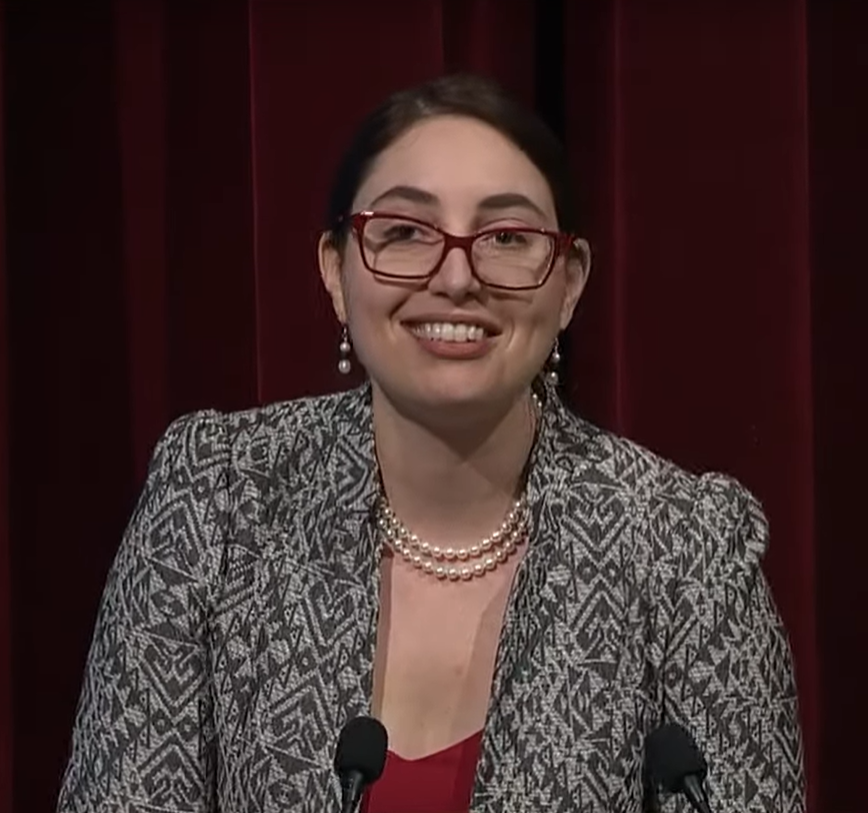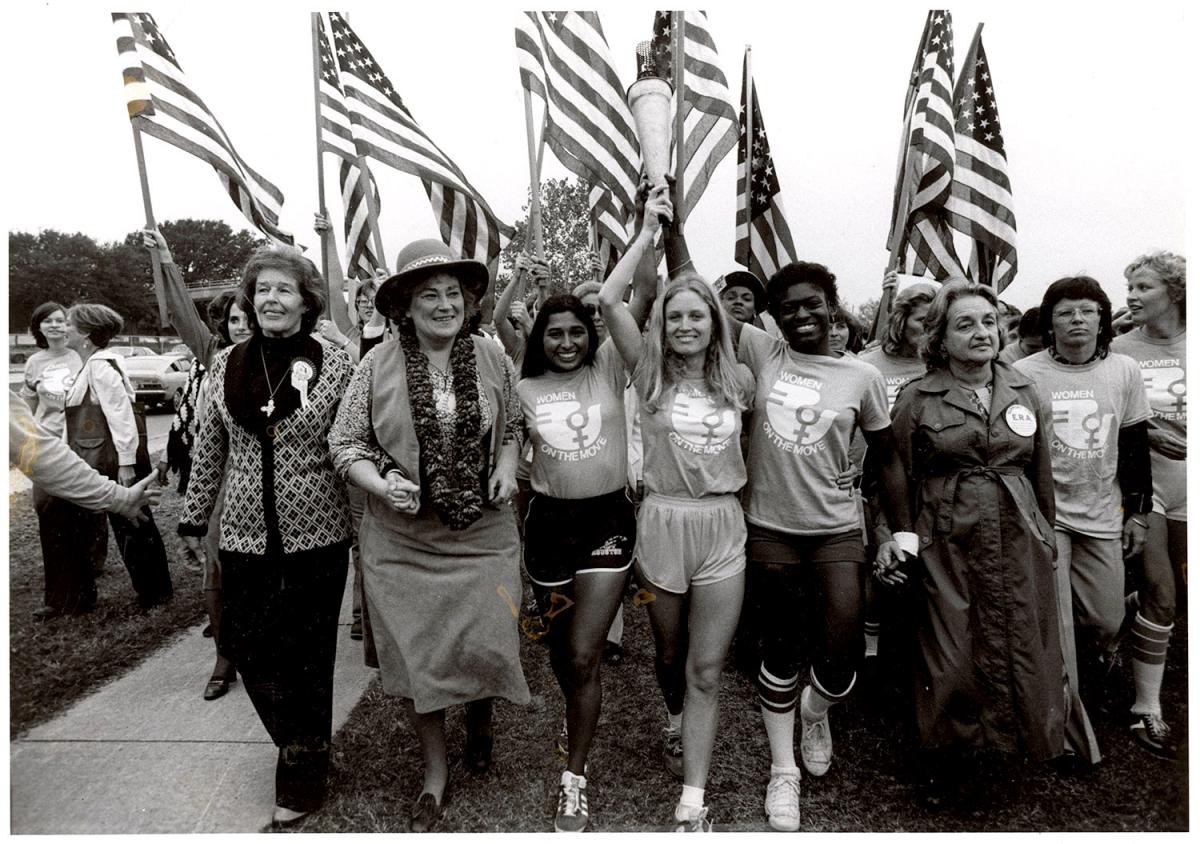
Author Discusses Congresswoman Bella Abzug’s ‘Protest Politics’
By Jonathan Marker | National Archives News
WASHINGTON, December 16, 2019 — Bella Abzug, a three-term congresswoman from New York from 1971 to 1977, was already well known for her fiery rhetorical style during the antiwar movement of the 1960s. Nicknamed “Battling Bella,” Abzug campaigned on the slogan “This Woman’s Place Is in the House—the House of Representatives” and passionately supported women’s rights, gay rights, universal childcare, and social justice.
Historian Leandra Ruth Zarnow, author of Battling Bella: The Protest Politics of Bella Abzug, discussed Abzug’s role in the Democratic Party’s “New Politics” movement as well as the partisan cost of her passionate campaign for social equity—and her magnificent collection of hats—on December 12, 2019, in the William G. McGowan Theater at the National Archives Building in Washington, DC. The book discussion is part of a series of programs related to the Rightfully Hers: American Women and the Vote exhibit, currently showing at the National Archives Museum.
“When Bella Abzug took her seat in the House of Representative 50 years after the ratification of the 19th Amendment, she was one of 13 women in the chamber,” Archivist of the United States David S. Ferriero said in his welcome. “Abzug made herself heard, like the women who fought for the right to vote in the first decades of the 20th century. She was a true heir to the suffragists and, through her own actions, she paved the way for other women to take their place in the political arena.”
Zarnow, a professor in the University of Houston’s Department of History and Affiliated Faculty in Women, Gender, and Sexuality Studies, discussed Abzug’s impact on the women’s rights movement..
“Abzug was a harbinger of change, ‘working out front’ as she liked to say, on controversial issues that now feel common,” Zarnow said. “Abzug’s story is newly relevant as we face complex social problems, deep economic stratification, heightened partisan polarization, and corruption in government.”
Zarnow also described Abzug’s famous collection of hats as an icon of her life as a “consummate performer” and was quick to note that the hats served as a vehicle of protest.
“Abzug recognized that political reporters focused on women politicians’ dress and demeanor first and their ideas second,” Zarnow said. “She really wanted to capitalize on this bias, so she began wearing hats regularly.”
Zarnow said that when Abzug was a lawyer in the mid-1940s, she was continually mistaken for being a legal secretary when she went into court. Her husband, Martin, encouraged Abzug to wear different hats to stand out as a professional.
“As one of the first commentators on CNN,” Zarnow said, “Abzug signed off each segment saying, ‘This is Bella Abzug, and I'm not talking through my hat’.”
Zarnow also noted that Abzug’s popularity and showmanship made it easy for her critics to dismiss her passionate political activism. However, by Abzug’s third term in the House of Representatives, she had become an influential force who rallied the Progressive Caucus. She became the at-large whip and was the first woman in history to hold such an office in the House. Although Abzug’s goal of becoming a Senator failed to materialize, Zarnow said that Abzug’s efforts inspired and laid the foundation for the ascent of future female leaders.
The Rightfully Hers: American Women and the Vote exhibit is on display in the Lawrence F. O’Brien Gallery at the National Archives Museum in Washington, DC, through January 3, 2021.
Find out about upcoming events in the National Archives online calendar.
The recorded program is available on the National Archives YouTube channel.

